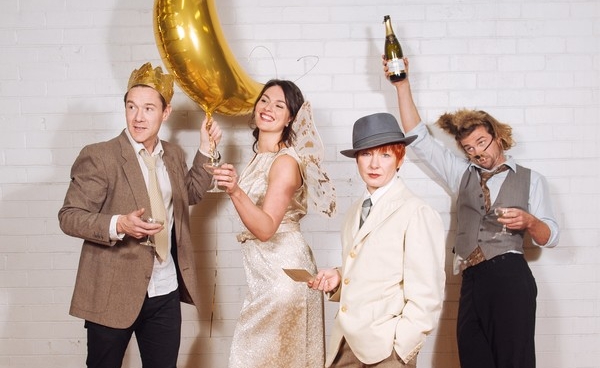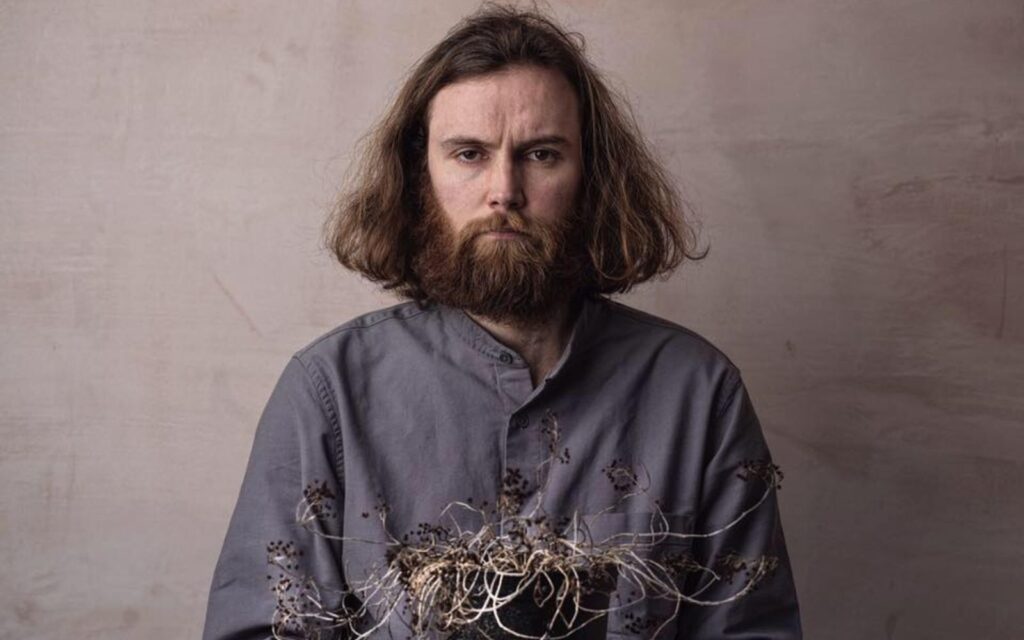While such instances of forced migration are alarmingly prevalent in the contemporary world, they’re certainly not unique to this time in history. “[Hearst’s] grandparents are Austrian Jews who fled Europe during the German occupation,” Rattray says. “Elise is so engaged with her culture and her history and it’s something that she explores quite often in her work.
“We’ve worked together to create this piece from the inception,” she adds, “which was from a photograph of her grandparents at a costume party.”
By electing to explore politically edged topics, there’s a risk of scaring off certain viewers. Witnessing a barrage of ideological assertions is hardly an appealing prospect. Rattray recognises the futility of such a technique. “My worst nightmare going into a theatre is that I’d just get answer, answer, answer along the way. I’d rather questions start snowballing.
“It’s actually quite good in this – it shows both sides of the story. The couples aren’t heroes, they’ve got their flaws, they’ve got quite large flaws. They’re human beings, like everyone else.”
Much like going to the cinema or seeing live music, theatre is often an opportunity to escape from the humdrum rhythm of everyday activity. The Mesh is evidently a work that encourages thought and discussion, but it’s also designed to transport the viewer beyond their subjective reality.
“I really like to create worlds that are new for an audience,” Rattray says. “I love finding atmospheres and tones in these new worlds. But I like the audience to leave asking a lot of questions and having a discussion around it, rather than giving them answers. I think that’s why Elise and I work together so well, because we have a similar view on that. We prefer to provoke a conversation rather than give any answers.”
Indeed, for viewers to make a substantial connection with the central themes, it’s necessary for them to become immersed in the narrative first. “Quite often Elise’s work, the main story line is quite a simple one so then she can explore symbolism and metaphor and these other creations within it, which I love. She’s kind of a cross between [Harold] Pinter and Caryl Churchill. That’s how I see her work.”
As mentioned, The Mesh was inspired by the real life experiences of Hearst’s family members, but the plot isn’t a biographical recount. In fact, even though it’sa tale of unnerving human struggle, a healthy portion of surrealism tempers the central gravitas.
“They are dark themes and ideas, but [Hearst] manages to insert quite a bit of humour,” Rattray says. “I think that’s something that runs in her family – they like a bit of a joke and having a bit of fun and so she inserts that into her texts.
“There’s these two great characters in the play called the Suits; Suit one and two. They almost terrorise the couples, but at the same time she manages to make them incredibly funny and entertaining. Working on work that does explore these really dark themes, it’s nice to have a bit of fun with it and find the joy in it.”
Having a bit of fun is basically what drives the play’s narrative events. In their attempt to find a sense of identity, the four central characters are engaged in a costume party – Clara is a butterfly, Lotte a witch, Max a king and Wolf… a wolf. Now, what good is a silly costume party without an equally fantastic soundtrack? “We have a ‘60s piano organ that the cast are playing and singing with and it’s wild,” Rattray reveals. “I love it. Our composer is just going nuts on it. It’s amazing, everyone’s getting a bit pumped about the piano organ.”
Rattray won’t go so far as to describe The Mesh as a piece of musical theatre, but songs feature prominently throughout the play. “I think that secretly Elise has been trying to do this for a long time because she’s a big fan of musicals, but I’ve never really risen to the challenge. She just happened to get it in here somehow. But it does make sense with the costume parties. They want to create their own little world within this new world and it’s their form of escapism.”
Despite this one slight taste discrepancy, Hearst and Rattray’s longstanding association means they’ve developed a fruitful collaborative chemistry. Their intimate familiarity with each other’s manner of working emboldens their creative decisions.
“I find Elise really inspiring and her writing is so magical that I always have loved working with her,” Rattray says. “So any chance that I get, I will.”
BY AUGUSTUS WELBY







